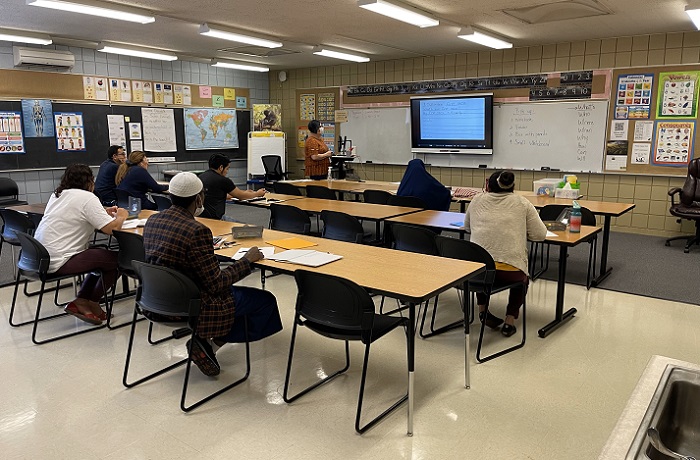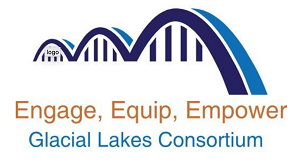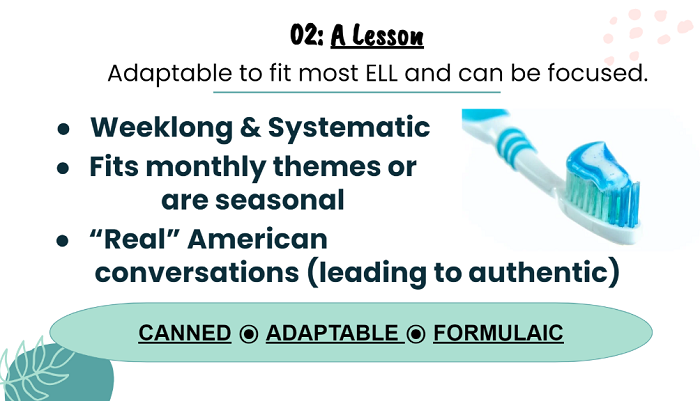- MN ABE Connect
- Archive
- Mastering English Conversations: Practical Dialogues for Adult Learners
 March 11, 2024
March 11, 2024
Mastering English Conversations: Practical Dialogues for Adult Learners
Kim Sombke, ELL InstructorHave you searched for tangible, comprehensive ways to teach much-needed conversation skills in your ELL classroom? As an instructor in a Level 3, low-intermediate classroom, I know I have—only to come up disappointed. Students beg for it, but scripted dialogues within the curricula that I use are almost non-existent, and what is available is not very, well. . . real. So, say it with me, what do we teachers do when we can’t find what we need for our students? “We make it!” And so I did. Over the past several years, I have developed two-person conversations—6-12 lines each, in conjunction with appropriate seasons and monthly themes—for my students, and perhaps for your students, too!
The big picture
- This activity is only one part of the larger day (30-60 minutes).
- There are 4-18 students in attendance at any given time.
- Pre-recorded audio is readily available.
- QR codes with links to the audio are interwoven for student use. The audio link is also available on my website.
- Equipment used includes a document camera, an Owl camera (for hyflex), and a SMARTboard for the teacher. Student iPads are also available.
Here’s a weekly schedule snapshot of a typical plan for the classroom:

Each day includes listening to the teacher-created recording, reading with whisper phones, and practicing aloud. On Mondays, the read-aloud is accomplished with the teacher as an echo read. Tuesdays, Wednesdays, and Thursdays include reading with a partner several times. In addition, these weeklong conversations are reviewed during the last week of each month—a great way to check for long-term learning.
“Organic conversation is not scripted,” you say? Correct! But conversations are formulaic. Don’t we follow a certain, prescribed pattern when we converse? Questions are worded in particular ways. Answers are often incomplete sentences. And typical American English is littered with slang. The objective here is for students to gain confidence in their conversation skills through a formulaic approach.
The scaffolding embedded and the weekly routines established provide a level of comfort, too, for students whose attendance is inconsistent. And rigor? By Thursday each week, students have all but mastered pronunciation, phrasing, and expression.
Additional thoughts
You’ve likely noticed a great deal of scaffolding—and so much repetition. Adaptations down a level could include cutting the length by half and changing some of the vocabulary. Modifications up a level might include a writing assignment by asking students to continue the conversation to amp up the rigor.
There are a plethora of “deep dive” possibilities within the conversations. Working on comma usage? Pronouns? Idioms? There are additional opportunities to practice the skills you are teaching elsewhere.
Here’s an incomplete list of deep dives ideas:
- Formal vs. Informal language (slang)
- Vocal intonation & reading with emotion
- Facial expressions & body language
- Homophones
- Contractions
- Mechanics
- Grammar
- Idioms/figurative language
- Theme development
Accessing the curriculum
To date, there are twelve conversation units, each with three or four printable conversations and accompanying slideshows, including vocabulary, audio, writing opportunities, and, perhaps—most importantly—questions for students to ask and answer with a partner to generate authentic conversation.
Listening to recordings of themselves is a great way to self-access pronunciation skills and improve them. Dictation and spelling tests are concrete ways to see strengths and weaknesses. The 5WH questions check for understanding, too. Formative and summative assessment opportunities abound.
Since the link to this shared folder is live, know that the contents are subject to change. You may, however, make your own copy of the Google Drive folder if you’d like to adapt these to your students’ needs. I invite you to peruse the lessons and use them as applicable. Share and share alike, right?
If you have questions or would like to see some video examples, please contact me at [email protected] as I’m always happy to help!

Newsletter Signup
Get MN ABE Connect—the official source for ABE events, activities, and resources!
Sign UpArticle Categories
- ABE Foundations/Staff Onboarding
- ACES/Transitions
- Adult Career Pathways
- Assessment
- CCR Standards
- Citizenship
- COVID-19
- Cultural Competency
- Digital Literacy/Northstar
- Disabilities
- Distance Learning/Education
- ELA
- Equity/Inclusion
- ESL
- HSE/Adult Diploma
- Listening
- Math/Numeracy
- Mental Health
- Minnesota ABE
- One-Room Schoolhouse/Multilevel
- Professional Development
- Program Management
- Reading
- Remote Instruction
- Science
- Social Studies
- Speaking/Conversation
- Support Services
- Teaching Strategies
- Technology
- Uncategorized
- Volunteers/Tutors
- Writing


